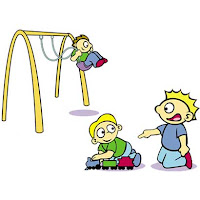Question
My 14yr old boy dropped out of school 2 years ago. Our present psychologist is very dismissive of his diagnosis although 2 psychiatrists have diagnosed him as having Asperger's complicated by separation anxiety and severe generalised anxiety disorder. I think his refusal to go to school stem from his Asperger's and his disposition to anxiety but our psychologist is saying that it's pure defiance. I am so afraid that he will end up in a wrong residential setting that is not equipped to deal with his autism if we cannot get the HSE to see that it's not just behavioural. He was on Prozac and Seroquil to help with behavioural problems and I wonder should he go back on Prozac while trying to return to school?
He was placed in a residential school last year but unfortunately it was a bad placement and he had to be removed. He is high functioning with above average intelligence and they placed him (against my wishes) in a school for children with severe learning difficulties. I am so afraid that they are not listening to me again and I hope someone might have some suggestions or guidelines for me. I have another meeting this week on Thursday but I am not very hopeful that it will bring about any beneficial change for us.
Answer
Case Example 1: Kayla, an eight-year-old Aspergers girl, has always had difficulty attending school. Since she began third grade two months ago, her problems have significantly worsened. She constantly begs to stay home from school, having tantrums that cause delay in dressing and often result in her missing the bus. After arriving at school, Kayla frequently complains of stomachaches, headaches and a sore throat to her teacher and asks to visit the school nurse with whom she pleads to call her mother. Her mother typically picks her up early twice a week. When Kayla gets home she spends the remainder of the afternoon watching TV and playing with her toys. When her mother is unable to pick her up early, Kayla calls her mother's cell phone periodically throughout the afternoon to "check in" and reassure herself that nothing bad has happened. Kayla's teacher has expressed concern about her missing so much class time which has resulted in incomplete assignments and difficulty learning.
Case Example 2: Jake is a fourteen-year-old Aspergers boy who has missed forty-three days of school since beginning the eighth grade four months ago. When home from school, Jake spends most of the day online or playing video games. On the days he does attend school he is typically late for his first period which enables him to avoid hanging out with other kids before class. He always goes to the library during lunch. When he does go to class, he sits in the back of the classroom, never raises his hand and has difficulty working on group projects. Jake' teachers have noticed that he is always absent on days that tests or book reports are scheduled. His parents have already punished him after his first report card came home since he received D's in Math and Social Studies and failed Gym for cutting. Jake' parents have started to wonder if they should change his school placement and have asked the school to arrange home tutoring while this alternative is explored.
Prevalence and defining characteristics—
As much as 28% of school aged kids in America refuse school at some point during their education.1 School refusal behavior is as common among boys as girls. While any youngster aged 5-17 may refuse to attend school, most youths who refuse are 10-13 years old. Peaks in school refusal behavior are also seen at times of transition such as 5-6 and 14-15 years as kids enter new schools. Although the problem is considerably more prevalent in some urban areas, it is seen equally across socioeconomic levels.
Kayla and Jake are just two examples of how school refusal manifests in Aspergers youth. The hallmark of this behavior is its heterogeneity. Defined as substantial, child-motivated refusal to attend school and/or difficulties remaining in class for an entire day, the term "school refusal behavior" replaces obsolete terms such as "truancy" or "school phobia," because such labels do not adequately or accurately represent all youths who have difficulty attending school. School refusal behavior is seen as a continuum that includes youths who always miss school as well as those who rarely miss school but attend under duress. Hence, school refusal behavior is identified in youths aged 5-17 years who:
1. are entirely absent from school
2. attend school initially but leave during the course of the school day
3. exhibit unusual distress during school days that leads to pleas for future absenteeism.
4. go to school following crying, clinging, tantrums or other intense behavior problems
As evidenced by Kayla and Jake, there are varying degrees of school refusal behavior. Initial school refusal behavior for a brief period may resolve without intervention. Substantial school refusal behavior occurs for a minimum of two weeks. Acute school refusal behavior involves cases lasting two weeks to one year, being a consistent problem for the majority of that time. Chronic school refusal behavior interferes with two or more academic years as this refers to cases lasting more than one calendar year. Youths who are absent from school as a result of chronic physical illness, school withdrawal which is motivated by moms and dads or societal conditions such as homelessness, or running away to avoid abuse should not be included in the above definition of school refusal behavior as these factors are not youngster-initiated.
While some school-refusers exhibit a more heterogeneous presentation, typically these youths can be categorized into two main types of troublesome behavior -- internalizing or externalizing problems. The most prevalent internalizing problems are generalized worrying ("the worry-wart"), social anxiety and isolation, depression, fatigue, and physical complaints (e.g. stomachaches, nausea, tremors and headaches). The most prevalent externalizing problems are tantrums (including crying and screaming), verbal and physical aggression, and oppositional behavior.
The cause and maintenance of school refusal behavior—
Kayla had several physiological symptoms at school and went home to be with her mother and play. Jake on the other hand, avoided potentially distressing social and evaluative situations at school which negatively impacted his academic performance. Although many behaviors characterize youths who refuse school, there are a few variables that serve to cause and maintain this problem. School refusal behavior occurs for one or more of the following reasons:
1. To avoid school-related objects or situations that cause general distress such as anxiety, depression or physiological symptoms
2. To escape uncomfortable peer interactions and/or academic performance situations such as test-taking or oral presentations
3. To pursue tangible reinforcement outside of school
4. To receive attention from significant others outside of school
The above four reasons for school refusal behavior can be explained by principles of reinforcement. Any one youngster can refuse school for one or more of these reasons. The first two reasons characterize youths who refuse school to avoid or escape something unpleasant (negative reinforcement). For example, one of the reasons for Kayla's crying in the morning is her fear of riding the school bus. By tantruming she accomplishes her goal of avoiding the school-related object (the school bus) that causes her distress. Another example of negative reinforcement is when Jake escapes aversive peer interactions and exams by school refusing. The third and fourth reasons characterize youths who refuse school to gain rewards (positive reinforcement). Kayla, as is common with many younger kids, tries to avoid school as a means of having her mother provide her with excessive attention and closeness. Thus, Kayla's behavior in this situation may be associated with separation anxiety.
Another instance of positive reinforcement is exemplified by Jake, who basically has more fun being at home on the computer and listening to music than being in school. It is important to note that alcohol and drug use can occur among adolescents who school refuse for one or more of the reasons listed above. For example, a teenager who is extremely socially anxious may drink alcohol as a way of enduring distressing social or evaluative situations. Another youngster who avoids school may smoke marijuana during school hours as a means of gaining acceptance by peers or simply because it is more enjoyable than attending school. While all forms of school refusal can be equally debilitating, typically, mental health professionals receive fewer referrals for youths who have internalizing as opposed to externalizing behavior problems. In other words, the youth who exhibits anxiety is less likely to receive treatment than the youth who is disruptive.
Home Schooling and Aspergers Children—
A common strategy in dealing with school refusal in Aspergers children is to switch to a home school environment. However, home schooling a child with Aspergers is completely different than educating a non-Aspergers child. Here is a summary plan:
• Child can only grow to be fully functioning if he first experiences a fully functional home life. Fighting, crying and meltdowns do not positively contribute to a functional home. Child functions best when conflict is removed so ALWAYS remove conflict and remain flexible.
• Meltdowns are worse for the child than they are for you. Remain calm and use the child's logic, obsessive compulsiveness and anger as a learning experience. Shutting your ears is tantamount to saying you know everything and are a superior person.
• Nobody can accuse you of being a bad mother. By designing education around the need of your child you are being the best mother you can be. Most people will be grateful that their children do not have Aspergers.
• Nobody can read your mind. Think abusive thoughts but NEVER say them because they will destroy the child's confidence and reinforce further unacceptable behavior and school refusal.
• Short term goals are not time specific. They can be revisited and strengthened at any stage. Know that the goals can be re-met if you do things differently.
• Teachable moments are everywhere. School does not have to represent that which we know as beneficial for us. School is everywhere and Aspergers learning occurs best without stress.
• What I value as important is not important to the child or his development. Allow him to explore that which he is highly interested in, even if it has no recognizable educational value to you.
• When you reign in and block outsiders from coming to your home and adding over stimulus, remember that it will only be for a short time while the child reaches emotional and social equilibrium again. Email and on-line Aspergers support groups produce no over stimulus to the child and are there 24 hours per day. Use them.
• Work through obsessions. On days when the child is focused on issues not included in the home school learning areas, it is acceptable to investigate the child's obsessions. These are teachable moments that will otherwise be lost.
• You are a team, a package, a caring parent. Team work means working together to get the best result. Work with the child, not against him.
• You can only recognize a bad day because you have first had good days to measure against. Things do improve. Hasten improvement by reducing conflict and grabbing whatever teachable moments you can.
Highly Acclaimed Parenting Programs Offered by Online Parent Support, LLC:
==>
How To Prevent Meltdowns and Tantrums In Children With High-Functioning Autism and Asperger's
==>
Parenting System that Significantly Reduces Defiant Behavior in Teens with Aspergers and High-Functioning Autism
==>
Launching Adult Children with Asperger's and High-Functioning Autism: Guide for Parents Who Want to Promote Self-Reliance
==>
Teaching Social Skills and Emotion Management to Children and Teens with Asperger's and High-Functioning Autism
==>
Parenting Children and Teens with High-Functioning Autism: Comprehensive Handbook
==>
Unraveling The Mystery Behind Asperger's and High-Functioning Autism: Audio Book
==>
Highly Effective Research-Based Parenting Strategies for Children with Asperger's and High-Functioning Autism


.jpg)


